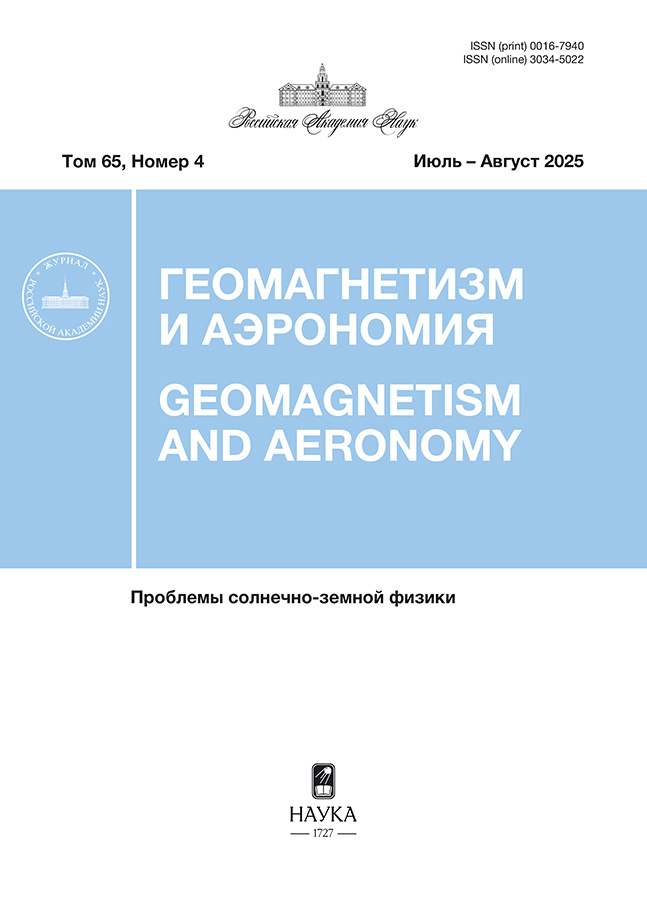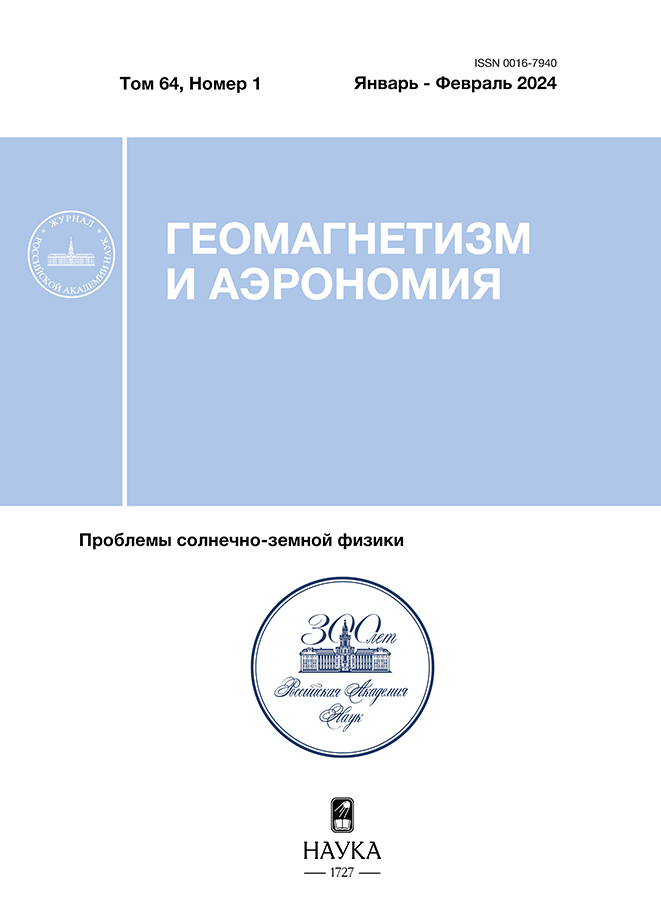Response of the lower and upper ionosphere after the eruption of Shiveluch volcano on april 10, 2023
- Authors: Riabova S.A.1,2, Shalimov S.L.1
-
Affiliations:
- Schmidt Institute of Physics of the Earth of the Russian Academy of Sciences
- Sadovsky Institute of Geosphere Dynamics of Russian Academy of Sciences
- Issue: Vol 64, No 1 (2024)
- Pages: 113-121
- Section: Articles
- URL: https://ruspoj.com/0016-7940/article/view/650961
- DOI: https://doi.org/10.31857/S0016794024010114
- EDN: https://elibrary.ru/GPTNZW
- ID: 650961
Cite item
Abstract
The disturbances in the lower ionosphere and in the region of the maximum of the ionospheric F2 layer during the Shiveluch volcanic eruption in April 2023 are analyzed based on data from ground-based magnetometers and GPS radio sounding of the ionosphere. The magnetic stations were located at distances of 455 km (Paratunka) and 752 km (Magadan) from the volcano. The variations in the magnetic field and total electron content of the ionosphere were studied as characteristics of the ionospheric response to this event. An analysis of the measurements showed that the impact on the ionosphere is carried out by seismic Rayleigh waves and atmospheric acoustic-gravity waves generated by volcanic explosions. The energy of several explosions was estimated from the amplitude of the ionospheric signal in the total electron content.
Full Text
About the authors
S. A. Riabova
Schmidt Institute of Physics of the Earth of the Russian Academy of Sciences; Sadovsky Institute of Geosphere Dynamics of Russian Academy of Sciences
Author for correspondence.
Email: ryabovasa@mail.ru
Russian Federation, Moscow; Moscow
S. L. Shalimov
Schmidt Institute of Physics of the Earth of the Russian Academy of Sciences
Email: ryabovasa@mail.ru
Russian Federation, Moscow
References
- Адушкин В.В., Спивак А.А. Воздействие экстремальных природных событий на геофизические поля в среде обитания // Физика Земли. № 5. С. 6‒16. 2021.
- Куницын В.Е., Шалимов С.Л. Ультранизкочастотные вариации магнитного поля при распространении в ионосфере акустико-гравитационных волн // Вестник МГУ. Сер. 3. Физика. Астрономия. № 5. С. 75‒78. 2011.
- Куницын В.Е., Нестеров И.А., Шалимов С.Л. Мегаземлетрясение в Японии 11 марта 2011 г.: регистрация ионосферных возмущений по данным GPS // Письма в ЖЭТФ. Т. 94. № 8. С. 657‒661. 2011.
- Ландау Л.Д., Лифшиц Е.М. Теоретическая физика. Т. 6. Гидродинамика. М.: Наука. 1986.
- Павлов В.А. Акустический импульс над эпицентром землетрясения // Геомагнетизм и аэрономия. Т. 26. № 5. С. 807–815. 1986.
- Соловьева М.С., Падохин А.М., Шалимов С.Л. Мегаизвержение вулкана Хунга 15 января 2022 г.: регистрация ионосферных возмущений посредством СДВ и ГНСС радиопросвечивания // Письма в ЖЭТФ. Т. 116. № 11. С. 816−822. 2022.
- Шалимов С.Л. Атмосферные волны в плазме ионосферы. М.: ИФЗ РАН, 390 с. 2018.
- Adhikari B., Khatiwada R., Chapagain N.P. Analysis of geomagnetic storms using wavelet transforms // Journal of Nepal Physical Society. V. 4. № 1. P. 119−124. 2017.
- Dautermann T., Calais E., Mattioli G.S. Global Positioning System detection and energy estimation of the ionospheric wave caused by the 13 July 2003 explosion of the Soufriere Hills Volcano, Montserrat // J. Geophys. —Sol. Eа. V. 114. N B02. 2009. doi: 10.1029/2008JB005722
- Grinsted A., Moor J.C., Jevrejeva S. Application of the cross wavelet transform and wavelet coherence to geophysical timeseries // Nonlinear Proc. Geoph. V. 11. P. 561–566. 2004.
- Grossmann A., Morlet J. Decomposition of Hardy functions into square integrable wavelets of constant shape // SIAM J. Math. Anal. V. 15. № 4. P. 723–736. 1984.
- Heki K. Explosion energy of the 2004 eruption of the Asama Volcano, central Japan, inferred from ionospheric disturbances // Geophys. Res. Lett. V. 33. N L14303. 2006. doi: 10.1029/2006GL026249
- Kelley M.C. The Earth’s ionosphere: Plasma physics and electrodynamics. San Diego, California: Academic Press, Inc. 487 p. 1989.
- Maraun D., Kurths J. Cross wavelet analysis: significance testing and pitfalls // Nonlinear Proc. Geoph. V. 11. P. 505–514. 2004.
- Meyer Y. Wavelets: Algorithms and applications. Philadelphia: Society for Industrial and Applied Mathematics, 134 p. 1993.
- Nakashima Y., Heki K., Takeo A., Cahyadi M.N., Aditiya A., Yoshizawa K. Atmospheric resonant oscillations by the 2014 eruption of the Kelud volcano, Indonesia, observed with the ionospheric total electron contents and seismic signals // Earth Planet. Sc. Lett. V. 434. P. 112−116. 2016.
- Riabova S.А. Application of wavelet analysis to the analysis of geomagnetic field variations // J. Phys. Conf. Ser. V. 1141. 2018. doi: 10.1088/1742-6596/1141/1/012146
- Riabova S.A. Study of the multifractality of geomagnetic variations at the Belsk Observatory // Dokl. Earth Sci. V. 507. № 2. P. 299–303. 2022. DOI: 0.1134/S1028334X22700489.
- Shults K., Astafyeva E., Adourian S. Ionospheric detection and localization of volcano eruptions on the example of the April 2015 Calbuco events // J. Geophys. Res. − Space. V. 121. № 10. P. 10,303–10,315. 2016. doi: 10.1002/2016JA023382
- Torrence C., Compo G.P. A practical guide to wavelet analysis // B. Am. Meteorol. Soc. V. 79. P. 605−618. 1998.
Supplementary files















